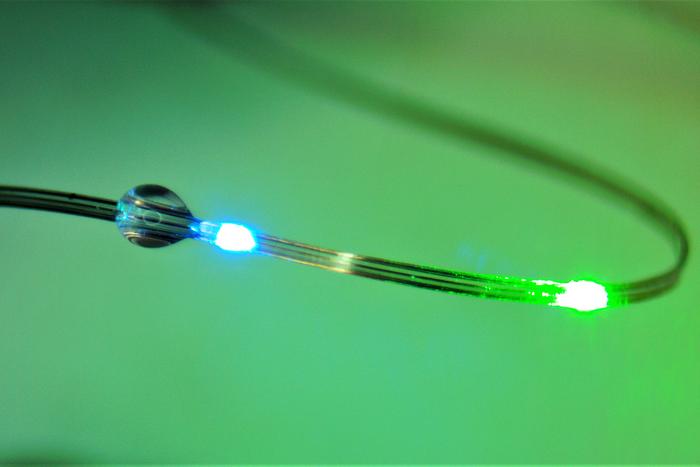The brain and the digestive tract are in constant communication, relaying signals that help to control feeding, and the implication that this communication network may also influence our mental state - as if "hangry" is science any more than a child getting hyperactive if they eat a piece of candy is - means it has been linked to everything from autism to Parkinson's disease.
Because there is very little science, it is mostly suggestion used to sell supplements and yogurt that makes you poop. A new technology hopes to introduce data to brain-gut mysticism.
Using fibers embedded with a variety of sensors, as well as light sources for optogenetic stimulation, the researchers have shown that they can control neural circuits connecting the gut and the brain, but don't get too excited you might save money not buying potions and serums, this is only in mice. As always when it comes to animal studies and epidemiology based on surveys, it has very little scientific relevance to humans.

Credit: MIT
In their paper, the researchers demonstrated that they could induce feelings of fullness or reward-seeking behavior in mice by manipulating cells of the intestine. Probing the signals that pass between the brain and the nervous system of the gut, the enteric nervous system, to understand how sensory cells in the gut influence hunger and satiety via both the neuronal communication and hormone release, is challenging because there is no good way to rapidly measure the neuronal signals, which occur within milliseconds.
The electronic interface that the researchers designed consists of flexible fibers that can carry out a variety of functions and can be inserted into the organs of interest. The fibers are polymer filaments, about as thin as a human hair, that can be embedded with electrodes and temperature sensors. The filaments also carry microscale light-emitting devices that can be used to optogenetically stimulate cells, and microfluidic channels that can be used to deliver drugs.
The mechanical properties of the fibers can be tailored for use in different parts of the body. For the brain, the researchers created stiffer fibers that could be threaded deep into the brain. For digestive organs such as the intestine, they designed more delicate rubbery fibers that do not damage the lining of the organs but are still sturdy enough to withstand the harsh environment of the digestive tract.
The fibers are also designed so that they can be controlled wirelessly, using an external control circuit that can be temporarily affixed to the animal during an experiment


